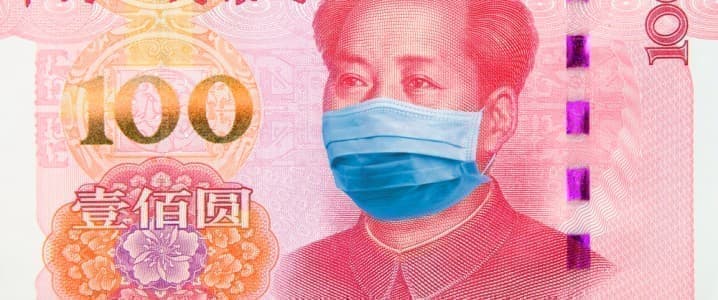Via AG Metal Miner
There have been a number of dynamics driving metals prices this year. They’ve ranged from the strength of the USD to the war in Ukraine to the still-ongoing energy crisis. However, as with the past two decades, the primary recurring theme remains Chinese demand. As both producer and consumer of most of the world’s major and minor metals, China is the driving force in supply. In short: when China sneezes, the entire metal market catches a cold.
COVID-19 Continues to Affect Chinese Consumption
Many investors continue to tie recent metal prices to the perception that China is at risk of a major slump. In the past three years, the primary reason for this reasoning is COVID-19 and the country’s policies regarding it. The fear is not that China will face mass infection like Europe, India, or the USA. Instead, investors worry that efforts to avert such a rise means more severe lockdowns, potentially leading to zero economic growth in 2023.
Infection rates spiked following the widespread mixing during the October holiday week. Still, it’s important to remember that this spike reflects a very low base. Even so, hitting 40,000 cases is unprecedented, even when considering the early days of the virus, which broke out in Wuhan. The population is reacting in one of two ways. They’re either cowering in their homes for fear of catching the virus or confined to their homes by official city or state lockdowns.
Either way, the effects are the same: a retail sales slump, production delays, and logistics disruptions. Of course, all of these have a direct impact on metal consumption. Collapse in consumption is causing anxiety among investors and causing prices to soften as 2022 draws to a close. Anecdotally, MetalMiner has received numerous reports of delays in metal production due to lock downs in major industrial centers like Chongqing.
China’s Ongoing Problems Could Put Metal Prices in a Bind
Widespread protests this weekend added to fears that the situation in China could worsen. As Reuters noted this week, the bigger the wave of discontent gets, the more the Chinese government argues for a violent crackdown on dissent and return to rigid quarantine. Of course, a move like that carries its own risks. Following the Tiananmen Square crackdown of 1989, Chinese economic growth slowed by nearly two-thirds. Not only did it plummet to a dismal 4%, but it stayed there throughout the following year.
In 2022, with real estate crashing, retail spending tepid, and exports down, the government can ill-afford further contraction. Even before factoring in Beijing’s response to the unrest, the International Monetary Fund expects a mere 3.2% GDP growth for China this year. Of course, protests are not on the level of those seen in 1989 – at least not yet. Nor are they at the level seen in Hong Kong in 2019-2020. However, for the first time, some protestors are actually calling for President Xi to step down. Such demands will not go over well, and the expectation is that the government will only become more oppressive in response.
Property Sector Woes Likely to Continue
Prior to the lock downs, the other major concern with China was the country’s failing property sector. Though the riots clearly take precedence in the current news cycle, those issues have not gone away. In fact, the government has ramped up lending to support the larger and more viable firms. It is also steering consolidation and rationalization. However, the sector is likely to remain depressed for at least a couple of years. This is because that funding will likely only support the completion of existing projects instead of new developments.
The rest of the world continues to slow and, in the case of Europe, move into recession. External demand will only weaken, so China can’t rely on it to pull its economy along. Therefore, the risks to metal prices as the year draws to a close remain very prominent. And with growing unrest weighing down any recovery, we should expect Chinese growth to slow this year and into the next.
By Stuart Burns
More Top Reads From Oilprice.com:
- BP Considers Retiring Its Statistical Review Of World Energy
- Apache Reports Rare Disappointment In Suriname
- NATO Chief Pledges To Back Ukraine 'For As Long As It Takes'


















